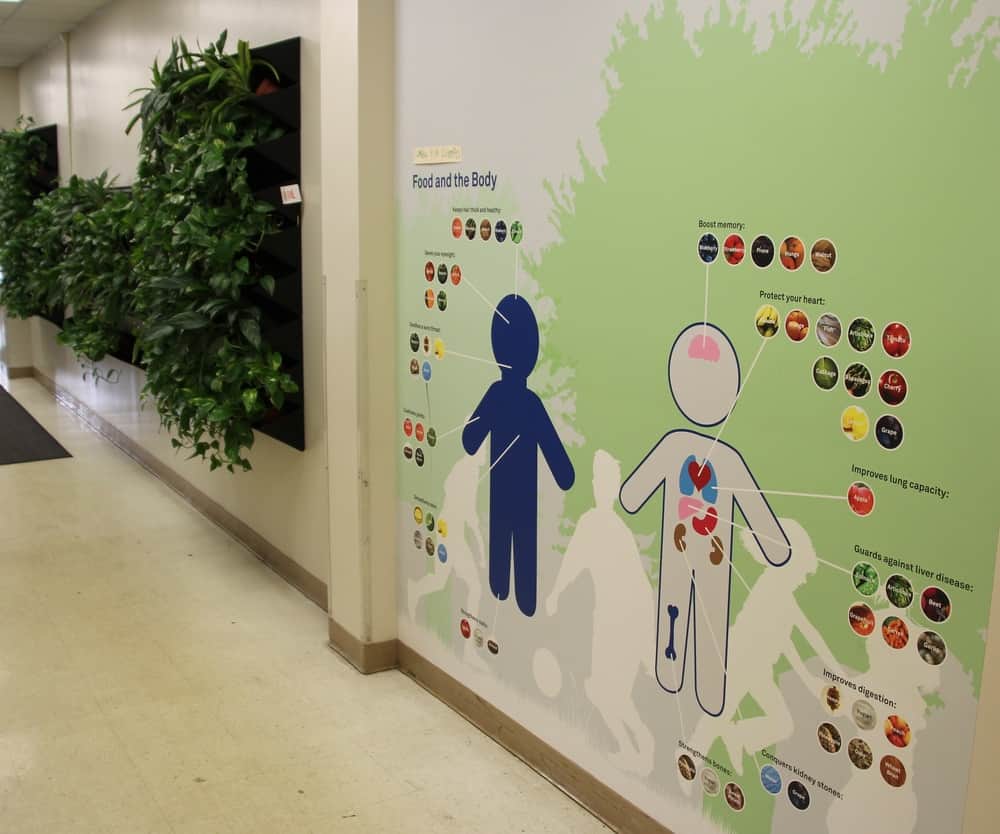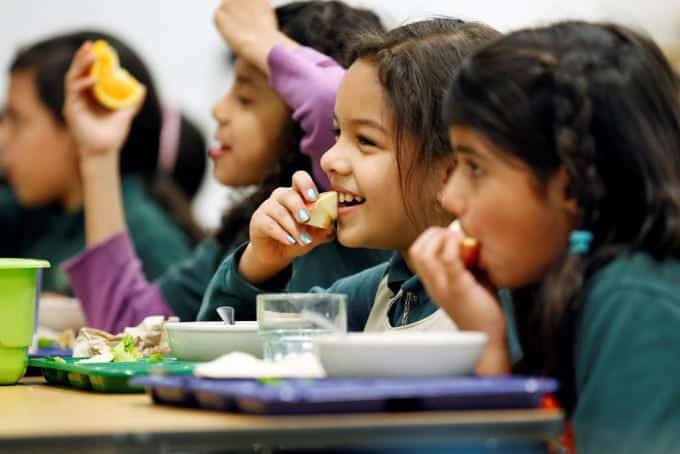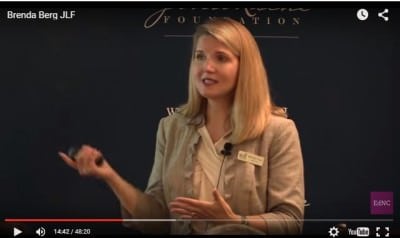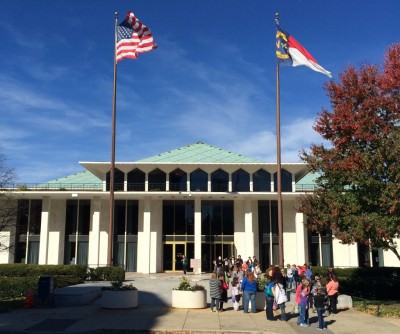“If I were given one hour to save the planet, I would spend 59 minutes defining the problem and one minute resolving it,” Albert Einstein said.
Perhaps we are spending too much time trying to solve the school food problem. Perhaps school food is not the problem. Perhaps school food is the solution. What would happen if we redefined the “problem” and used the current structures and limitations of school food as the solution?
The problems seem numerous and insurmountable: 12.7 million children (17 percent) are obese.1 15.8 million children live in food insecure households.2 School lunch programs only have $1 to spend on food. The National School Lunch Program (NSLP) serves over 5 billion meals a year 3 with strict rules. The US is ranked 28th in world education systems.4 Forty percent of food produced in the US is wasted.5
If we dip our toes in the water and only look at the problems individually, the water is bitter cold. If we jump into the ocean of problems and see them as interconnected, we quickly come to find that our bodies adapt to comfort and we can manage the waves. That is where school food comes into play. On its own, it is an underfunded system based on low cost and speed of service. It is seen as “outside of the school day.” We know however that food plays an essential role in education, brain development, behavior, and culture.
What if we shift the conversation from “how do we solve the school food problem?” to “how do we solve obesity, hunger, focus, behavior, and environmental problems through food?”
The Academy for Global Citizenship (AGC) in Chicago decided to tackle the complex challenges that faced their community with this food-centric approach. The underserved community sits on the south side of Chicago near Midway airport. Eighty-one percent of AGC’s students received free or reduced lunch through the NSLP. Fresh produce in the community was difficult to find.
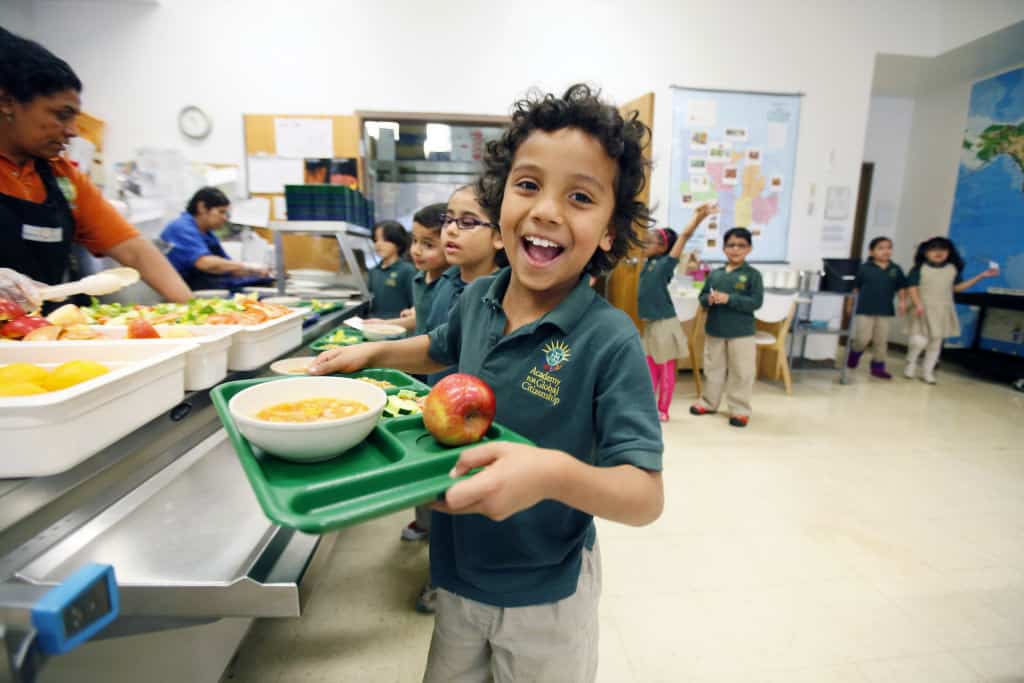

The idea germinated from a simplistic look at the roots of the problems that faced the community and the country. Food touches everything: land use, energy, workers, transportation, health, air quality, water quality, finances, education, violence, jobs, culture, hunger, obesity, history, politics, and the environment. Food relates to all educational subject matters: math, science, literacy, history, social studies, art, music, technology, geography, agriculture, finances, etc. The idea seemed straight forward enough; use food and sustainability as the engine for systemic change. The obstacles manifested themselves in a siloed system built to mimic factories instead of gardens. Systems that saw each subject as a world of it’s own: math was in one box, science in another, reading and writing were often not even linked and certainly the goal of lunch was to finish and get back to class. It was this attitude that led to the first “definitive” “NO!” when pitched an organic and healthy menu for these public school students. The standard excuses were used as the basis of the argument, “it would cost too much,” “kids won’t eat healthy food,” “we can’t do it for everybody so we won’t do it for anybody.”
“Then we won’t open.” When you believe in something, it is worth risking it all and that is what AGC did. And the system began to crack. School opened with organic fresh fruit and organic tater tots for breakfast on Styrofoam trays. It did not take long to accept the new normal and push changes. Within months, breakfast was on compostable trays (later replaced with reusable trays) and next to the orange slices was fresh vanilla spiced oatmeal.
Then began composting. Then students brought in food waste from home to compost. So parent compost workshops began. Then worm bins were placed in the classroom. Nutrition education blended with PE class (and before testing windows) so students could know how to fuel their body and brains for success. Then the asphalt parking lot became a garden and classes began to measure plants, figure out how much soil they needed to add each year, how often to water, what students of different ethnicities eat at home. Then International Day in the cafeteria began; 3rd graders researched a country and helped the chef choose menu items. Those recipes were then adjusted to fit the requirements of the NSLP. Music was played, students presented what the learned and helped make samples of the recipe so the school could taste it before being confronted with it in the cafeteria. And kids ate health food.
Families were engaged through Taste of AGC events, where families are invited in to try some of the more adventurous foods such as Tempeh Sloppy Joes. Families have reported changes in how they eat at home. The community has rallied and organic produce is appearing in the local grocery stores. And if you prefer more local produce, you can stop by the AGC Farmers Market in the summer, where students have done everything from growing to marketing to pricing and selling.
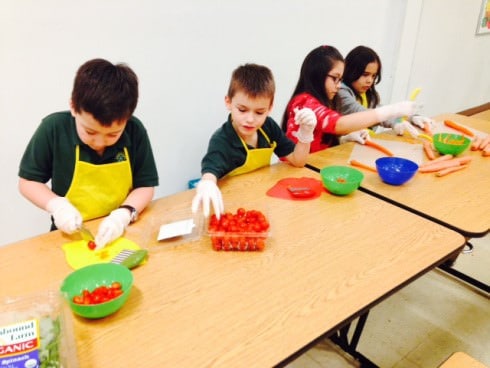

The system is built around the way the kids and the world work; rivers carve their way through stone — the mountains do not dictate their course. Kids are curious, adventurous, willing. AGC created an environment, not a system, where food can help fuel success in the classroom, at recess, and at home. The environment is one where culturally relevant and culturally adventurous food simultaneously comfort and encourage risk-taking and curiosity. AGC teaches concepts through food. The environment empowers children to make good choices by offering them multiple good options (spicy broccoli or kale chips). Students are encouraged to give feedback and be part of the process. The school chefs and cafeteria manager are educators, empowered to sit with the kids, talk about food, talk about school and life. The cafeteria mirrors the home dinner table. Teachers are encouraged to sit with their students, not to “be on duty” but to share in the cultural enjoyment of food.


When the student return to their classrooms, they have a few minutes of yoga to center themselves and to provide them with coping tools for when they inevitable feel frustrated, tired, or angry.
The seeds have been planted and some schools and districts are reaping the benefits. There are great food programs going on throughout North Carolina. Programs in Chapel Hill-Carrboro City Schools are integrating healthy food choices, composting, and food waste lessons. Durham Public Schools are reaching an increased number of students through innovative breakfast, lunch, weekend, and break programs. It takes a leader with vision and courage. It takes sitting down at the table with students, parents, teachers, and administrators to ask, “how can we turn our food experience into a learning opportunity.” When we begin to ask those questions, we begin to create the ripples that lead to a wave of change.
“Let food be thy medicine and medicine be thy food.” Perhaps it is time to break down the silo that school food lives in and see it as an asset. Instead of tackling obesity, hunger, asthma, behavioral issues, and school food; it is time to tackle those issues through school food. For generations, we have learned from food. It is time to come home.
